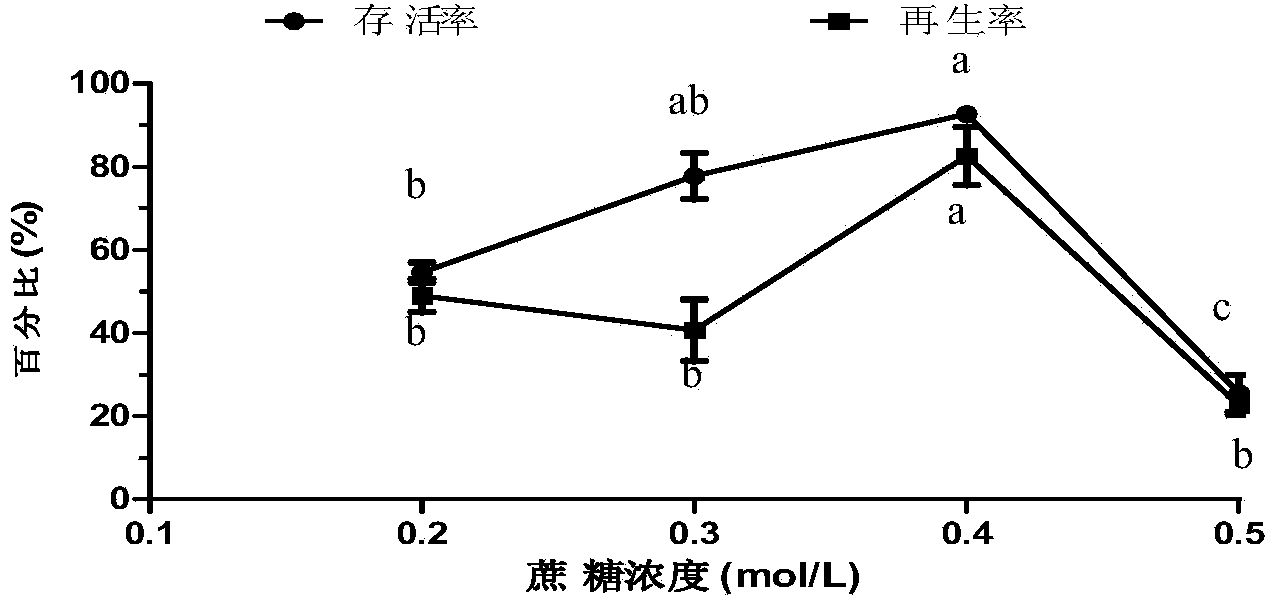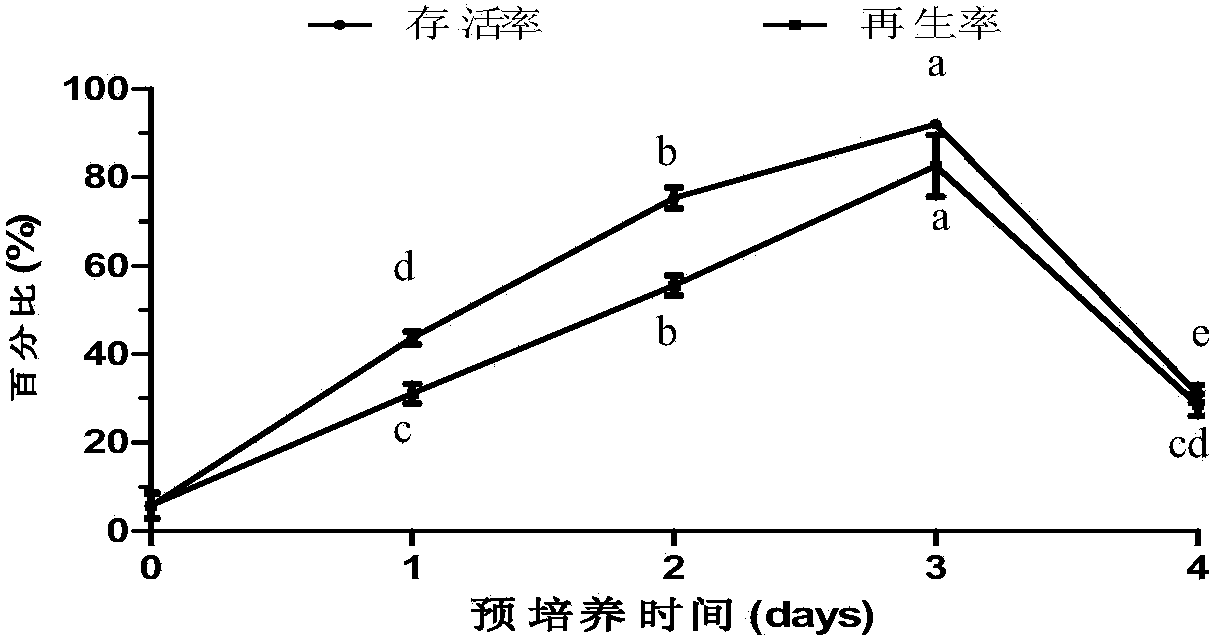Ultralow temperature storage and regeneration culture method of in vitro stem tip of Jerusalem artichoke
A technology of ultra-low temperature preservation and regeneration culture, which is applied in the field of ultra-low temperature storage and regeneration culture of Jerusalem artichoke in vitro shoot tips, can solve problems such as different procedures and technologies, and achieve the effect of restoring good growth.
- Summary
- Abstract
- Description
- Claims
- Application Information
AI Technical Summary
Problems solved by technology
Method used
Image
Examples
Embodiment 1
[0029] Embodiment 1 Jerusalem artichoke test-tube plantlet isolated stem tip droplet vitrification cryopreservation technology and plant regeneration culture method
[0030] Experimental materials: from the National Germplasm Bank Test Tube Seedling Bank, the germplasm number is '2009331028'.
[0031] The specific steps of the experimental method are as follows:
[0032] 1. Material acquisition:
[0033] 1) Plant Jerusalem artichoke tubers in flowerpots, wait until they grow to about 40cm, cut off the robust branches as explants, cut them into about 3cm bud stem segments, wash the surface stains with tap water, and use 10% NaClO solution After the surface was disinfected for 8 minutes and washed with sterile water for 3 to 5 times, the explants were inoculated into MS+15g / L sucrose+8g / L agar medium for cultivation.
[0034] 2) After the test-tube plantlets grow stably, transfer to MS+0.1mg / L GA 3 +15g / L sucrose+8g / L agar medium for expansion and culture. The culture temper...
Embodiment 2
[0043] Example 2 Effect of sucrose concentration in the pre-culture solution on cryopreservation of isolated shoot tips of Jerusalem artichoke
[0044] Only the sucrose concentration in the pre-culture solution was changed, and the rest of the steps were the same as in Example 1 to study the effect of the sucrose concentration in the pre-culture solution on cryopreservation of Jerusalem artichoke isolated shoot tips. The result is as figure 2 shown.
[0045] from figure 2 It can be seen that when the sucrose concentration is 0.2mol / L, the survival rate and regeneration rate are both about 50%. With the increase of sucrose concentration, the survival rate and regeneration rate reached the highest when the concentration was 0.4mol / L, which were 93% and 83% respectively. Excessively high sucrose concentration will reduce the survival rate and regeneration rate. When the sucrose concentration is 0.5mol / L, the survival rate and regeneration rate are only about 10%. The shoot...
Embodiment 3
[0046] Example 3 Effect of pre-cultivation time on cryopreservation of isolated shoot tips of Jerusalem artichoke
[0047] Only the pre-cultivation time was changed, and the rest of the steps were the same as in Example 1, to study the effect of the pre-culture time on the cryopreservation of Jerusalem artichoke isolated shoot tips. The result is as image 3 shown.
[0048] from image 3 It can be seen that pre-culture has a significant effect on improving the survival rate and regeneration rate of Jerusalem artichoke isolated shoot tips after cryopreservation. With the prolongation of pre-culture time, the survival rate and regeneration rate showed a trend of increasing first and then decreasing. The survival rate and regeneration rate of the shoot tips were only 6% after cryopreservation without pre-culture; the survival rate and regeneration rate reached the maximum after 3 days of pre-culture, which were 93% and 83% respectively; after 4 days of pre-culture, the surviva...
PUM
 Login to View More
Login to View More Abstract
Description
Claims
Application Information
 Login to View More
Login to View More - R&D Engineer
- R&D Manager
- IP Professional
- Industry Leading Data Capabilities
- Powerful AI technology
- Patent DNA Extraction
Browse by: Latest US Patents, China's latest patents, Technical Efficacy Thesaurus, Application Domain, Technology Topic, Popular Technical Reports.
© 2024 PatSnap. All rights reserved.Legal|Privacy policy|Modern Slavery Act Transparency Statement|Sitemap|About US| Contact US: help@patsnap.com










